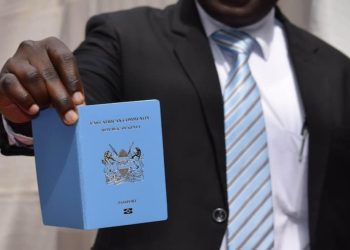Kenya has over the recent past rolled out key infrastructure initiatives that have set a solid foundation for economic takeoff.
A country that is keen to achieve its development aspirations must place infrastructure at the centre of economic planning. Developed countries such as the United States, United Kingdom, Germany, Japan and China realised this economic imperative and went about the process of implementing a network of mega infrastructure projects comprising roads, railways, airports and widespread distribution of electricity. Keen to follow in these footsteps, Kenya has over the recent past rolled out key infrastructure initiatives that have set a solid foundation for economic takeoff.
Among the first such projects is the Sh32 billion Thika Road superhighway, a key transport artery of the city. The expansion of the road, which kicked off in 2009 and completed in 2012, was meant to ease movement of people and goods in the capital Nairobi and unlock the city’s economic potential. The road cuts through the northern part of the country and connects Kenya to Ethiopia, expanding the trade ties between the two neighbouring countries.
Northern, Southern and Eastern bypasses have been completed, while construction of the Western Bypass is underway.
“We want a situation where you hardly drive into Nairobi if you have no reason to do so. Whether you are driving or rely on public transport, there will be a road connecting you to the suburbs with ease,” said Transport secretary James Macharia when he launched the construction of the Western bypass last year.
All these multibillion projects are aimed at decongesting the city and boosting its attractiveness as a hub for investment.
Boost trade
Perhaps the biggest infrastructure project rolled out by the Kenyan government is the Standard Gauge Railway. The facility is already operational, ferrying both passengers and cargo between Nairobi and the port city of Mombasa. The first phase of the SGR, built at a cost of Sh327 billion, has already transformed transport significantly cutting the travel time between the two cities. More travellers and traders are increasingly using the facility, which analysts say has potential to revolutionise trade in Kenya and the region.
The construction of the second phase of the SGR, linking Naivasha and Nairobi, is underway and is expected to be completed next year. The extension of the railway to Naivasha will tap the region’s prospects as an economic zone. Naivasha is home to geothermal power and thus, it can attract investors in the manufacturing sector.
“Once the project is completed, Naivasha will become a magnet for special economic zones, investors and their tenants who will require a reliable freight service to haul raw materials from Mombasa Port to their factories and transport finished products to the Coast for exportation to overseas markets,” Macharia said recently.
The third and final phase of the SGR will start from Naivasha cutting through the Rift Valley counties of Narok and Bomet then to Kisumu and finally Malaba. This is expected to open up rural areas and stimulate economic activities along these routes.
Once it connects Mombasa and Malaba, the next plan is to link the major East African cities; Kampala, Kigali, and Juba. Kenya is banking on this connection to embolden ties between the neighbouring countries by creating vital networks between ports and key cities in East Africa.
Opening rural areas
As part of efforts to boost development in rural areas, Kenya has been building new tamarc roads as well as revamping and upgrading existing ones. Analysts say once the entire 10,000km road network is complete, it will radically transform the transport system in the country and act as a catalyst to accelerated and shared economic growth.
Another key infrastructure for economic growth is electricity distribution. As Kenya seeks a more robust manufacturing sector, a reliable and affordable electricity supply is indispensable. The cost of power is one of the key factors that investors take into account before deciding where to put their capital. Local manufacturers have been lamenting, for a long time now, that costly power makes it hard for them to record a decent bottom line. This is the same reason that economic experts say stand in the way of more direct foreign investment (DFI) to the country. Electricity tariffs in Ethiopia are comparatively lower. The government took up the challenge promising to boost the country’s electricity capacity. President Uhuru Kenyatta’s administration had in 2013 pledged to step up power production from about 1,800 megawatts to about 5,000mw. The target is yet to be attained with the current installed capacity at 2,500mw against a peak demand of about 1,700mw.
Kenya has been relying mainly on the hydropower that depends on the availability of rains. During the dry spell, the country is compelled to use expensive thermal power, driving up the cost of doing business. However, this has been gradually changing for the better as the country opts for alternative sources, especially renewable sources such as solar and wind power.
While there is still a long way for the country to be sufficient in terms of critical infrastructure, the level of progress is admirable. The government needs to sustain the momentum to ensure all ongoing projects are completed, setting Kenya on its way to economic prosperity.
Kazz Taiya is a freelance journalist based in Nairobi. Email: kazztaiya@gmail.com
















